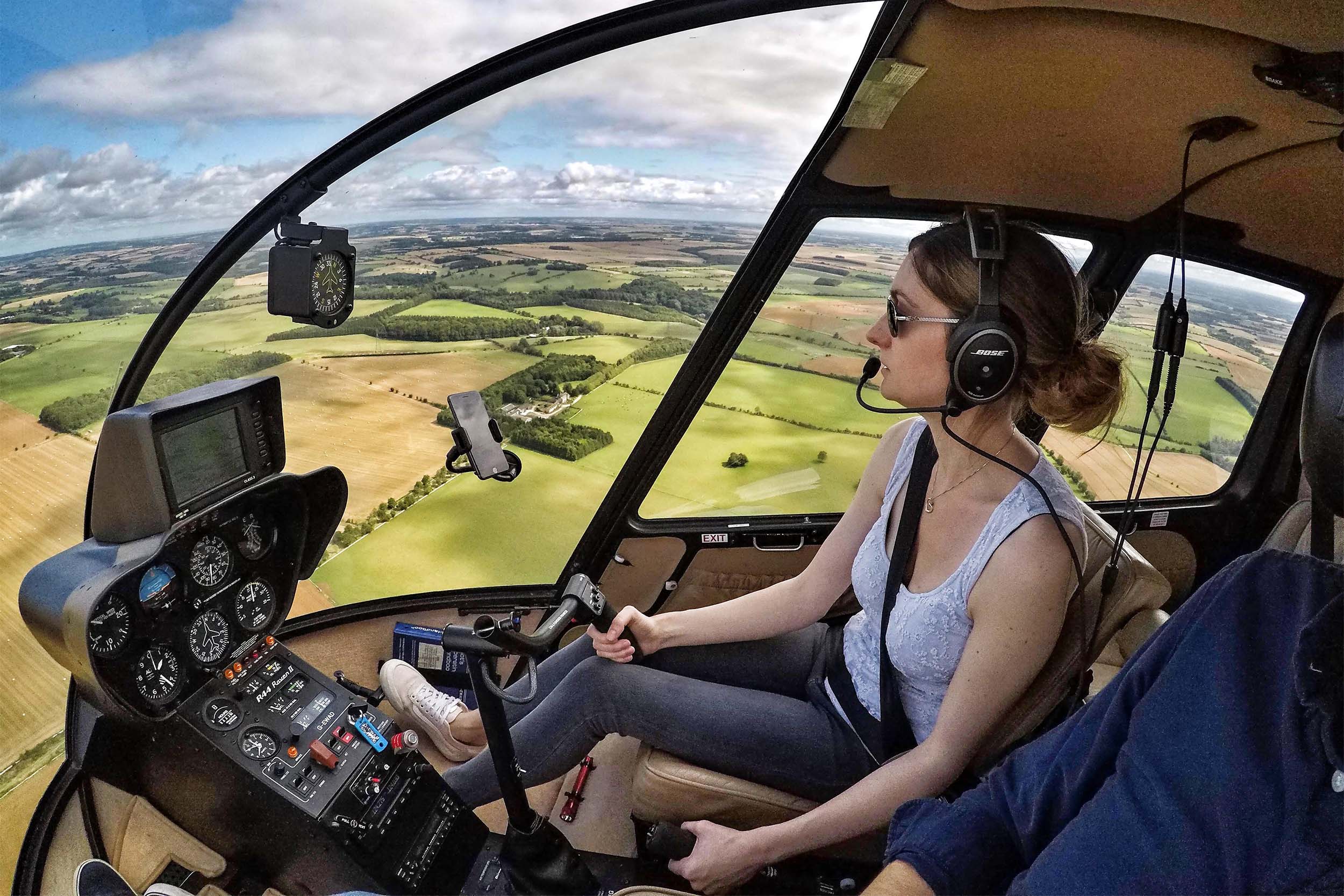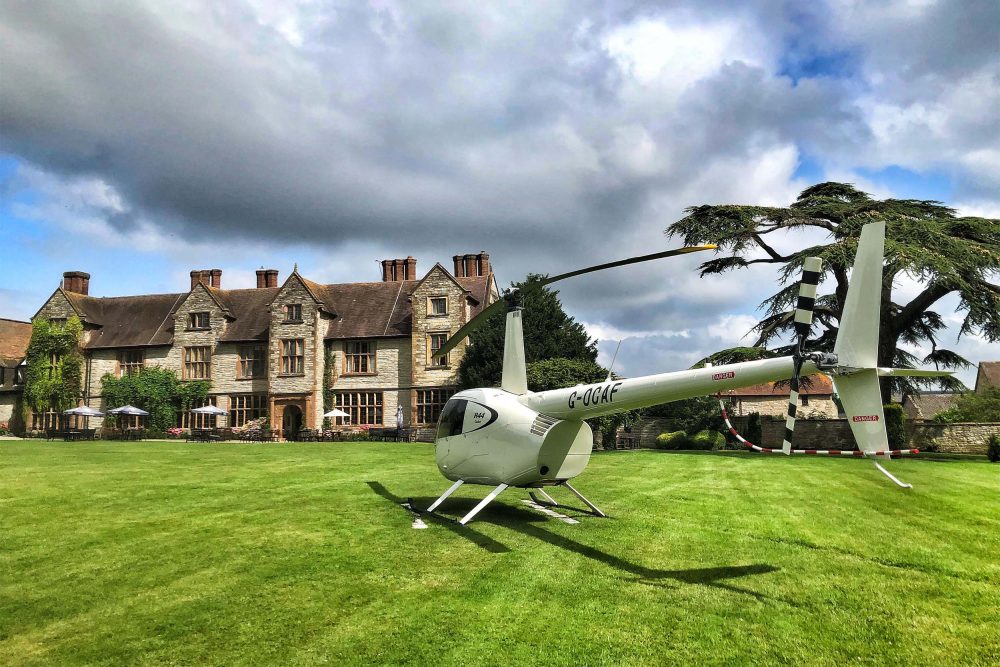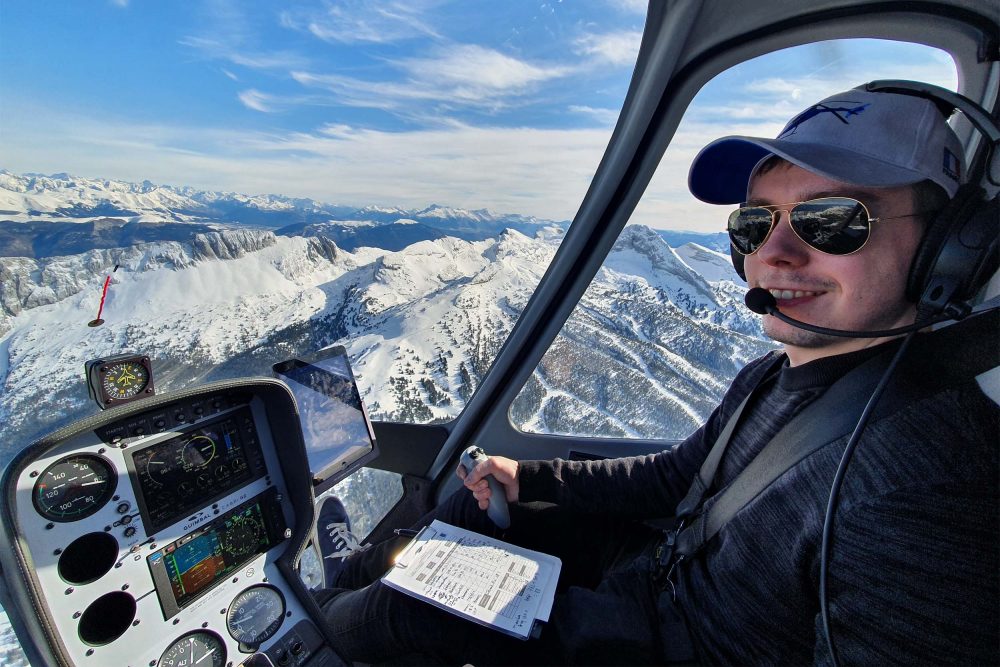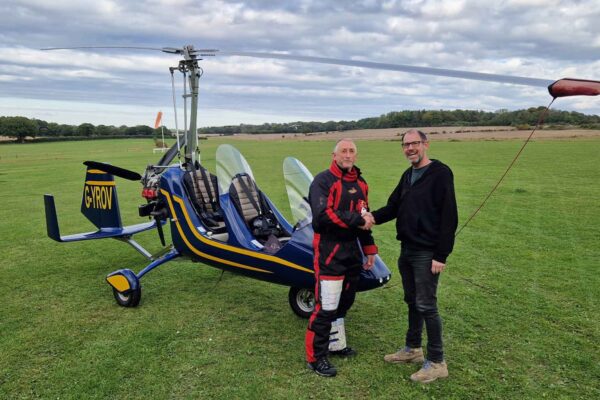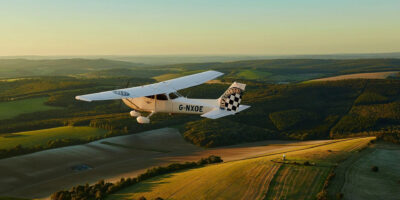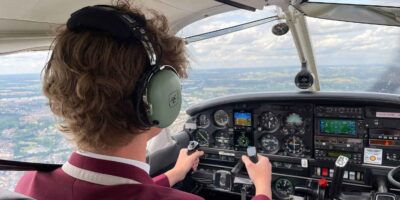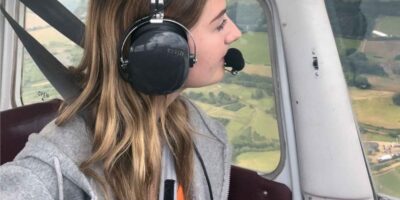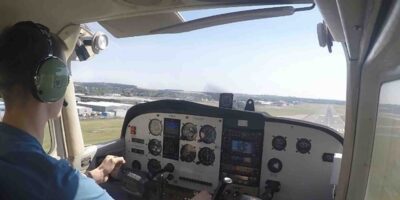You’ll be working on your navigation skills, even using an OS map in flight for finding landing sites (it’s normal to pretend you’re on Treasure Hunt when you do this!).
Towards the end of your training comes the moment it’s all been leading up to: off-airfield landings. You’ll learn how to plan your approach into a field or hotel site, assessing its suitability by doing reconnaissance orbits to check for hazards such as livestock, telegraph wires or debris. It’s your first taste of real-life flying and the adventures that await after you qualify.
Skill Test and beyond
As your final big Skill Test looms closer, you’ll have another hurdle to cross: your ‘Qualifying Cross Country’. This is a solo flight of 100 nautical miles (nm), during which you’ll land at two other airfields. It’s at this point that you realise how far you’ve come, and after a lot of revision it won’t be long before you pass your Skill Test and can officially call yourself a helicopter pilot.
In the world of helicopters, you need a ‘type rating’ – an official qualification on your licence – for each different kind of helicopter you want to fly. Having learned on the two-seat R22, I managed to find some extra cash to convert to the R44, the more powerful four-seat version. This is a five-hour flying course with a ground exam and another Skill Test, but I’d recommend budgeting for more than the minimum hours (and the hour-long Skill Test is on top of the five hours).
Adventures by helicopter
You never stop learning, but once your coveted PPL(H) drops through the letterbox the learning becomes more fun.
It’s time to put your licence to good use with some rotary adventuring, which I’d recommend doing with a more experienced pilot in the beginning.
You technically only need to fly two hours a year and complete a proficiency check (per type rating) to maintain your licence, but to stay current you’ll need to fly a lot more than this. With a fantastic selection of exciting landing sites now at your disposal, you’ll soon find that this is no great hardship.
One of the helicopter pilot’s most enjoyable pastimes is flying to various country house hotels, where it’s a safe bet that half the hotel guests will be out on the lawn taking photographs of your arrival and departure. If you have friends with a garden to land a helicopter in, that’s a fun thing to do. Every landing is a challenge, learning something new.
Another item on the bucket list of many helicopter pilots is flying the London heli routes, a carefully mapped network of aerial lanes criss-crossing the capital. The incredible views you get en route are impossible to enjoy in a single-engine aeroplane, so it’s a great way to impress your fixed-wing friends.
Also worthy of adding to your helicopter bucket list, once you’re more experienced, is the flight into Weston-super-Mare Airshow, an approach that takes you in over the sea and has you landing by the beach, watched by hundreds of people.
There are always new things to learn, and if you’re not ready for your training to come to an end yet then there’s plenty more you can be studying for once you’ve got your PPL(H) in the bag.
Helicopter flying is a little different from fixed-wing in that it’s primarily VFR – that is, we fly in sight of the ground.
Few private helicopter pilots have instrument ratings, as the course has to be completed on a prohibitively expensive twin-engine helicopter. However, the five-hour night rating course is a realistic goal if you’re up for a new challenge.
Some pilots go on to get their commercial licence, and in the helicopter world you’ll need a minimum of 155 hours before you can take the 30-hour CPL(H) course. Competition for helicopter jobs is fierce and many of the cool jobs you see on television – such as air ambulance or police pilots – go to ex-military pilots. For many people, becoming a flight instructor is the only realistic way of hours building, and you’ll need 250 hours before you can start.
Helicopters represent the ultimate form of flying – and the very fact that it takes so much effort to master them simply makes them all the more rewarding.


